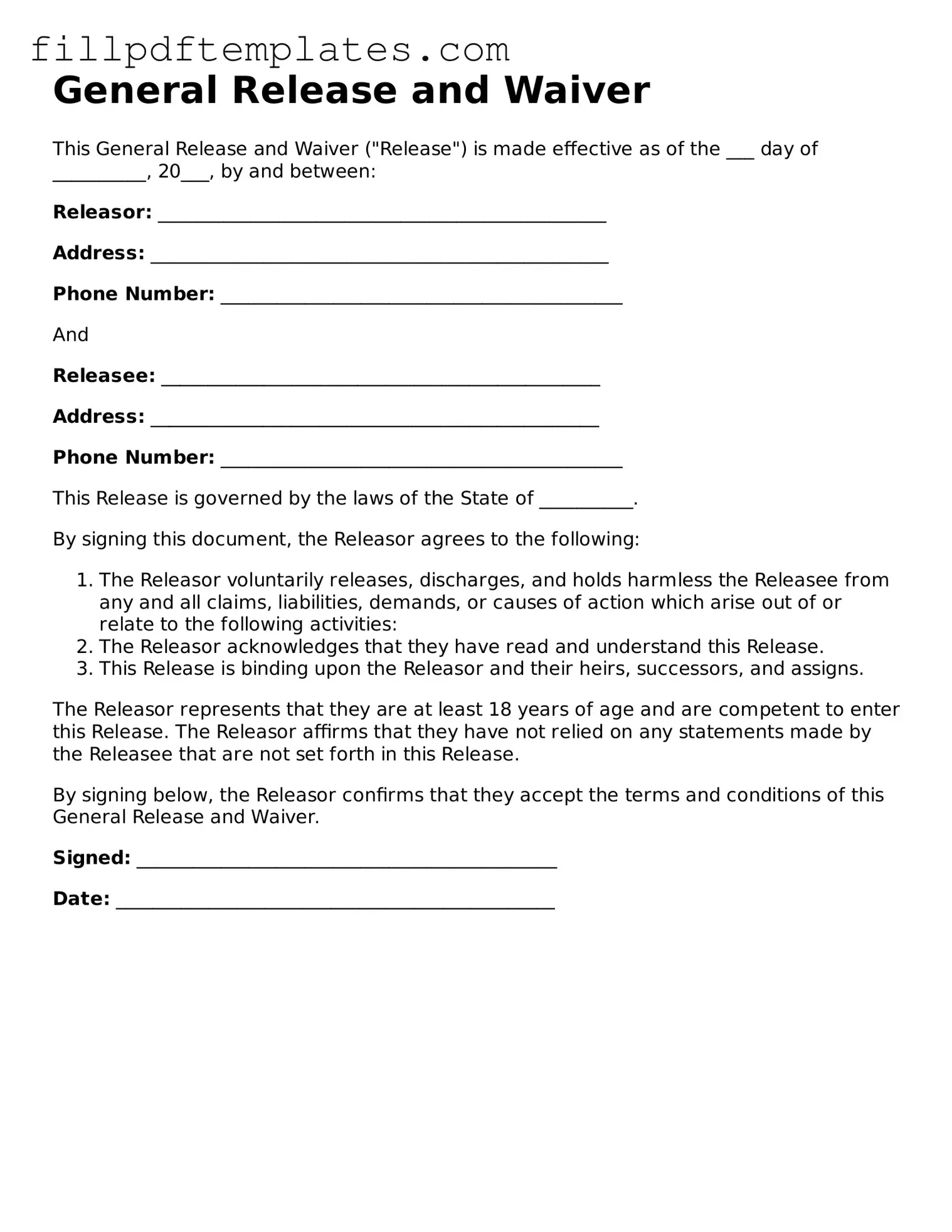General Release and Waiver
This General Release and Waiver ("Release") is made effective as of the ___ day of __________, 20___, by and between:
Releasor: ________________________________________________
Address: _________________________________________________
Phone Number: ___________________________________________
And
Releasee: _______________________________________________
Address: ________________________________________________
Phone Number: ___________________________________________
This Release is governed by the laws of the State of __________.
By signing this document, the Releasor agrees to the following:
- The Releasor voluntarily releases, discharges, and holds harmless the Releasee from any and all claims, liabilities, demands, or causes of action which arise out of or relate to the following activities:
- The Releasor acknowledges that they have read and understand this Release.
- This Release is binding upon the Releasor and their heirs, successors, and assigns.
The Releasor represents that they are at least 18 years of age and are competent to enter this Release. The Releasor affirms that they have not relied on any statements made by the Releasee that are not set forth in this Release.
By signing below, the Releasor confirms that they accept the terms and conditions of this General Release and Waiver.
Signed: _____________________________________________
Date: _______________________________________________
